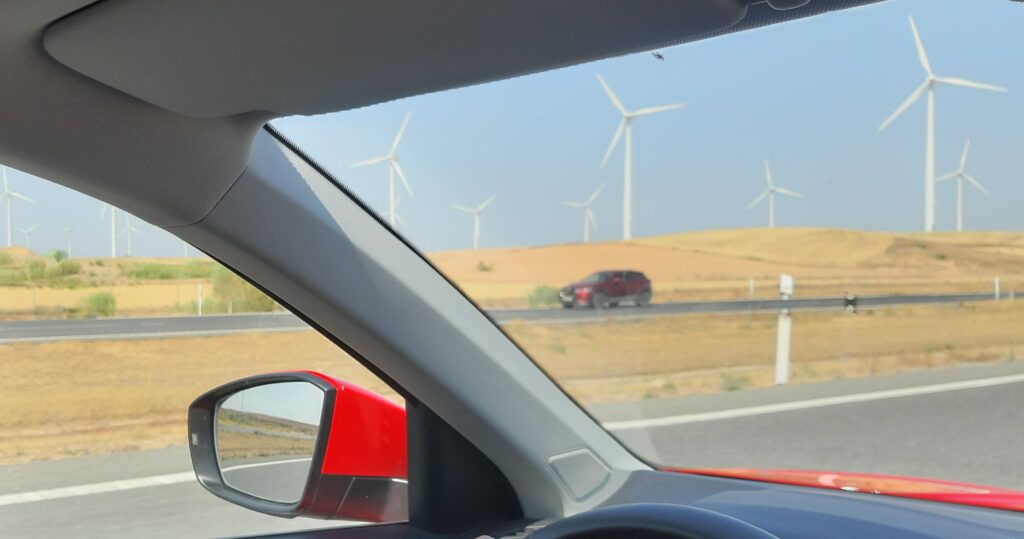
Close

When you drive past a row of turbines on the horizon, it’s easy to forget how much work goes into getting them there. A wind farm isn’t just a set of machines dropped into a field, it’s the result of years of planning, testing, and constant study once the blades start spinning.

Every project starts with a question: is the wind here good enough to produce power reliably? That’s where wind resource assessment comes in. Developers gather on-site measurements and combine them with long-term datasets spanning several decades. These datasets can come from reanalysis products or from high-resolution simulations using the WRF model. Wind engineers then study how the wind behaves across hills, forests, and coastlines to asses the energy resource and turbulence. Finally this study identify the most suitable locations and also determine whether a project is worth pursuing.
Once a site proves promising, developers secure permits, financing, and grid connections. Construction itself usually happens quickly by comparison: turbines are transported, assembled, and connected within a year.
A turbine is built to last about 20–25 years. During that time, operators monitor performance, maintain equipment, and compare production with expectations. This is where Annual Energy Production (AEP) validation becomes crucial. Before construction, models predict how much electricity the farm should produce each year. After commissioning, real data is checked against those forecasts. If output falls short, engineers can trace the cause, whether it’s wake effects, maintenance downtime, or unexpected weather patterns.
Not all lost energy is a mystery. Sometimes operators are asked to reduce generation, a process called curtailment, which can happen because of grid limits, market prices, or even to protect wildlife. Other times, physics plays the leading role: turbines cast wakes that reduce wind speed for their neighbors, and large arrays of turbines can even slow the wind upstream, creating what’s known as blockage. These effects are normal but must be accounted for when estimating production.
At every stage, from early studies to end-of-life decisions, accurate modeling is what gives developers and investors confidence. AEP forecasts, wind maps, and validation tools make the difference between a good project on paper and a reliable source of clean energy in practice. At Vortex, that’s where we come in, producing high-resolution wind simulations to help projects succeed.
At every stage of a wind farm’s journey, data is what transforms an idea into reliable energy—and that’s where Vortex makes a difference.
In the early greenfield phase, Vortex provides detailed wind maps that help developers identify the most promising sites. During project design and construction, our modeling technology refine energy estimates, optimize layouts, and reduce uncertainty before a single turbine is installed. Once the farm is operational, our data helps operators understand performance, identify issues, and improve efficiency.
And when the time comes to repower or extend a project’s life, our long-term datasets and analysis support better decisions about technology upgrades and future output.
So, when you see turbines turning on the horizon, remember that every project begins not with steel or concrete—but with understanding the wind itself. That’s where Vortex begins, too.
Modeled wind resource data for the wind industry.
At any site around the world. Onshore and offshore.